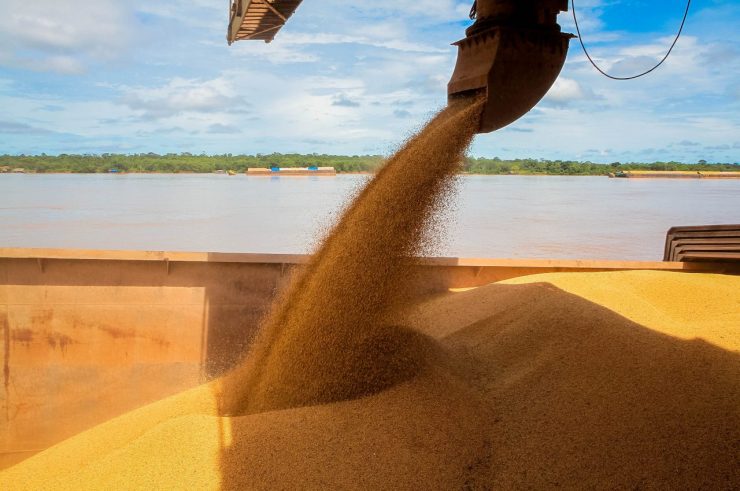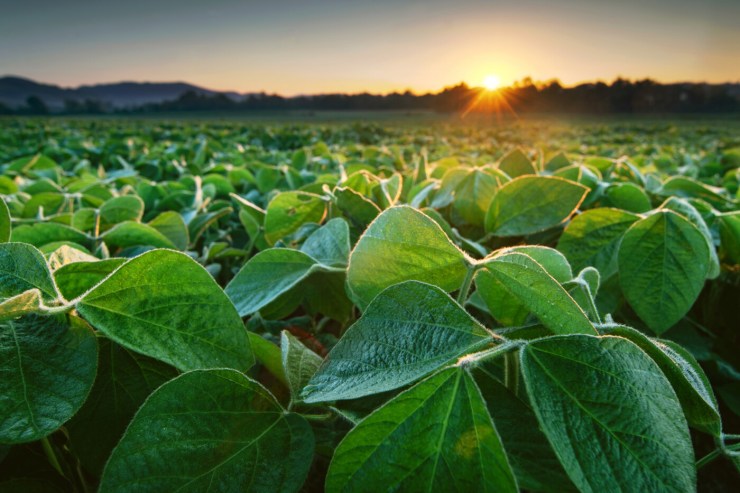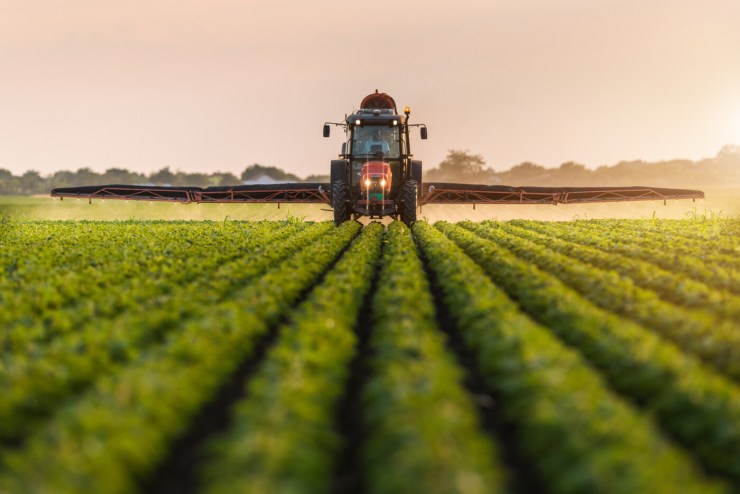The 100th anniversary of soybean cultivation in Brazil is the theme of the 10th edition of the Brazilian Soybean Congress (CBSoja) and Mercosoja, an event that began Monday evening in Campinas, São Paulo. The opening conference expanded its focus to Mercosur and featured experts who have been key players in the genetic development of soybeans in Brazil and Argentina over the past 50 years.
Canal Rural journalist Giovani Ferreira moderated a chat featuring Romeu Kiihl, a former Embrapa researcher currently at MGS Genetic Improvement and Seeds, considered the father of tropical soybeans; Tuneo Sediyama, a professor at the Federal University of Viçosa and a leading figure in the genetic improvement of the crop; as well as Rodolfo Luis Rossi, from the Argentine Soybean Chain Association (AC Soja) and Gerardo Bartolomé, founding partner and former president of the Dom Mário Group (GDM).
Romeu Kiihl presented a timeline of soybean cultivation in Brazil, from the first trials in Bahia and São Paulo in the late 19th century. When commercial planting began in Rio Grande do Sul in 1924, the cultivars used were imported from the United States and were not adapted to Brazilian soil and climate conditions.

Photo: Gilson Abreu
The researcher recalled the names of key figures in the early days of soybean selection and genetic improvement, participants in a national network of soybean trials. "The history of soybean genetic improvement in Brazil is divided into three phases. One before the creation of Embrapa Soja in 1975, another after the creation of Embrapa Soja, and a third with the introduction of the cultivar protection law," Kiihl stated.
By understanding the mechanism of the long juvenile period, it was possible to adapt soybean cultivars to low-latitude regions. This made the crop, previously restricted to southern Brazil, viable throughout the Brazilian Cerrado.
Professor Tuneo Sediyama listed the factors that contributed to the success of soybeans in Brazil, most of which are the result of scientific development. In addition to advances in genetic improvement, advances in production systems, soil correction and management, and plant nutrition were among the highlights.
Even with the significant leap in productivity over the past 100 years, Sediyama noted that the potential for evolution is still enormous and should continue to grow in what she called the third evolution of soybeans. She believes the first evolution was its introduction into Brazil, the second was tropicalization, and the third is what she calls genetic introgression, with the use of new techniques that will speed up genetic improvement.
Private initiative boosted soybean production in Argentina
While in Brazil, the initial launch of soybean cultivation was based on research conducted at public institutions such as universities, the Ministry of Agriculture, and Embrapa, in Argentina, this role fell to the private sector. "I don't want to say it's better or worse, just that it's different," stated Rodolfo Rossi. Companies such as the Dom Mário Group worked on developing local cultivars based on genetic material from the United States.
One distinguishing feature of the neighboring country was its choice to industrialize soybeans. This led the country to become a leading exporter of soybean meal and oil. Another characteristic that marked the trajectory of Argentine soybeans was the country's pioneering role in regulating and releasing genetically modified crops in 1996, the same year the United States did so and before the European approval.
As in Brazil, Argentine genetic improvement has resulted in an increase in early-maturing cultivars, as Rodolfo Rossi and Gerardo Bartolomé demonstrated. Bartolomé also highlighted the search for increasingly productive materials, not only for Argentine farmers but also for Brazilians, where GDM has also been operating for 25 years.
Future of soybeans
At the end of the conference, the moderator asked the panelists about the future of soybeans in Mercosur. Everyone spoke about the potential for evolution brought about by the use of new gene editing tools. Representatives of a previous generation place the expectation on young breeders to develop increasingly productive cultivars that will make the production system more efficient and sustainable.

Photo: Gilson Abreu
With over 50 years of experience in soybean genetic improvement, Romeu Kiihl made a point of leaving a message for new professionals: "I believe the future is promising because young breeders have incredibly interesting tools. But I like to remind young people that a computer screen isn't everything. Soybeans grow in the field," he warned.
CB Soybean
The 10th Brazilian Soybean and Mercosoja Congress is sponsored by Embrapa Soja and runs until Thursday, the 21st, at Expo Dom Pedro in Campinas. Three other conferences and 15 panels are scheduled, totaling more than 50 lectures by Brazilian and international experts. In addition, 321 technical and scientific papers will be presented in nine thematic sessions over the three days, as well as five debates on practical topics related to day-to-day crop problems.





